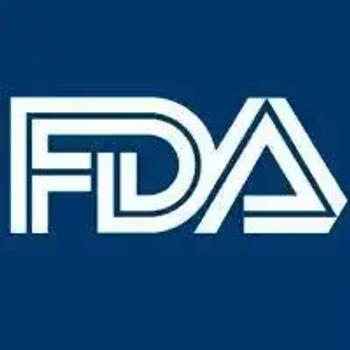
TAR-200 elicits high complete response rate in BCG-unresponsive NMIBC
Key Takeaways
- TAR-200 achieved an 82.4% complete response rate in BCG-unresponsive high-risk NMIBC, the highest single-agent response reported.
- Rapid responses were observed, with a median onset of 2.8 months, and 95% achieved by the first disease assessment.
Data showed an overall CR rate of 82.4%.
Treatment with TAR-200 yielded an 82.4% complete response (CR) rate in patients with BCG-unresponsive high-risk non–muscle invasive bladder cancer (NMIBC), which is the highest single-agent CR rate reported to date, the authors of a study noted.1
These data, collected from cohort 2 of the SunRISe-1 trial (NCT04640623), were presented at the
In total, cohort 2 of the trial included 85 patients with BCG-unresponsive high-risk NMIBC with carcinoma in situ (CIS) with or without papillary disease. Patients received TAR-200 every 3 weeks for the first 24 weeks and then every 12 weeks through week 96. The study did not allow for re-induction of nonresponders.
Data showed an overall CR rate of 82.4% (95% CI, 72.6% to 89.8%).
Presenting author Joseph Jacob, MD, MCR, noted, “These CRs were rapid, with a median onset of 2.8 months. Over 95% of these responses were achieved at the first disease assessment, which was month 3.”
The observed CR rate at 12 months was 45.9%. Per Kaplan-Meier assessment, the overall CR rate was 52.4% (95% CI, 40.7% to 62.8%) at 12 months and 44.7% (95% CI, 33.1% to 55.7%) at 24 months.
“The responses remain consistently high across all patient subgroups, including those with and without papillary disease,” added Jacob, who is an associate professor of urology at Upstate University Hospital in Syracuse, New York.
Additionally, data showed that 52.9% of responses lasted for at least 1 year. At the time of data report, 47.1% of responses remain ongoing. To date, 11 patients had passed the 2-year time point, of whom 9 remained in response.
The estimated duration of response (DOR) was 56.2% (95% CI, 43.4% to 67.1%) at 12 months and 51.8% (95% CI, 38.7% to 63.4%) at 24 months. The median DOR was 25.8 (95% CI, 8.3 to NE) months. Among the 70 responders, 32.9% had high-grade NMIBC recurrence and 5.7% had T2 or greater progression. Further, at 12 months, the cystectomy-free rate was 86.6% (95% CI, 76.6% to 92.6%).
Overall, the proportion of patients who achieved and maintained a CR for at least 12 months was 44%.
Data also showed that quality of life was maintained while on treatment. Both global health status and physical functioning scores were high at baseline and remained stable on treatment. Neither exceeded the clinically meaningful change threshold of 10 points.
TAR-200 was also well-tolerated. The majority of treatment-emergent adverse events (TEAEs) were grade 1 or 2 and resolved after a median of 3.1 weeks.
Jacob also reported, “There was a 99% insertion success rate, which shows you that urologists did not have problems placing these devices.”
A total of 5 patients experienced 1 or more serious treatment-related adverse events (TRAEs). TRAEs led to treatment discontinuation in 3.5% of patients. There were no treatment-related deaths.
Overall, the SunRISe-1 trial is assessing the safety and efficacy of TAR-200 in combination with cetrelimab (cohort 1), TAR-200 monotherapy (cohort 2), and cetrelimab monotherapy (cohort 3) in patients with BCG-unresponsive high-risk NMIBC with CIS. The trial also includes a fourth cohort assessing TAR-200 monotherapy in patients with BCG-unresponsive papillary disease-only high-risk NMIBC.
TAR-200 is currently under review by the FDA. Johnson & Johnson initiated a new drug application with the agency in January 2025, seeking approval of TAR-200 for patients with BCG-unresponsive high-risk NMIBC with CIS with or without papillary tumors.2
The gemcitabine-releasing system is currently available in the US through a preapproval expanded access study (NCT06877676), which is now enrolling participants.
REFERENCES
1. Jacob JM, Guerrero-Ramos F, Necchi A, et al. TAR-200 monotherapy in patients with Bacillus Calmette-Guérin–unresponsive high-risk non–muscle-invasive bladder cancer carcinoma in situ: 1-year durability and patient-reported outcomes from SunRISe-1. J Urol. 2025;213(5S2):e2. doi:10.1097/01.JU.0001111604.90306.91.03
2. New drug application initiated with U.S. FDA for TAR-200, the first and only intravesical drug releasing system for patients with BCG-unresponsive high-risk non-muscle-invasive bladder cancer. News release. Johnson & Johnson. January 15, 2025. Accessed May 2, 2025. https://www.jnj.com/media-center/press-releases/new-drug-application-initiated-with-u-s-fda-for-tar-200-the-first-and-only-intravesical-drug-releasing-system-for-patients-with-bcg-unresponsive-high-risk-non-muscle-invasive-bladder-cancer
Newsletter
Stay current with the latest urology news and practice-changing insights — sign up now for the essential updates every urologist needs.















